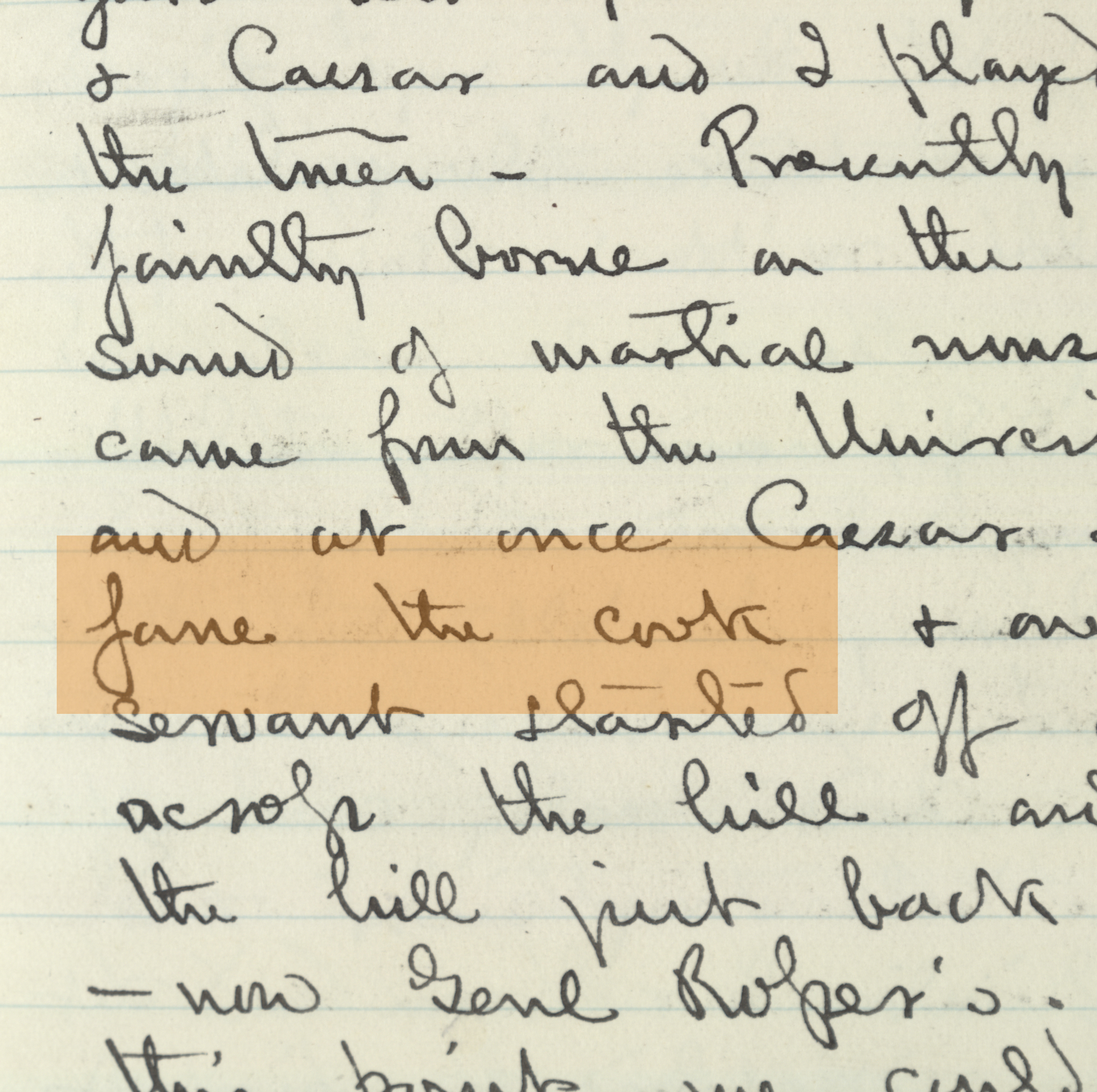Jane lived at Sunnyside—the property on which the University of Virginia law and business schools now sit— as an enslaved cook, held in bondage by the family of R.T.W. Duke Sr. In March 1865, after the arrival of the Union Army in Charlottesville, Jane left Sunnyside and Virginia.
Jane was born in the late 1820s or early 1830s. In 1859, she had been put up for sale on the Charlottesville green by Court Square, the city’s site for slave auctions. Facing imminent sale to traders, Jane advocated for herself there on the green and convinced R.T.W. Duke Sr. to purchase her bondage for $1000.[1] At the time, the Duke family lived on East High Street in downtown Charlottesville. There, in the fall of 1861, Jane came down with a suspected case of smallpox and was quarantined in a cabin off the back of the house. In 1863, Jane moved with the Duke family to Sunnyside.[2]
Jane was a skilled cook. Amid severe food scarcities during the Civil War, Jane “deftly” concocted stews, hash, and soups that winter from the weekly ration of beefshead.[3]
On March 3, 1865, the Union army marched into Charlottesville, and Jane ran toward the music of the Union band when it drifted across to Sunnyside.[4] She was joined by two other enslaved people from Sunnyside, including ten-year-old Caesar, as well as eleven-year-old R.T.W. Duke Jr. The group made their way up and over UVA’s modern-day intramural and softball fields. They eventually perched themselves on a hill behind the property of Andrew Brown, likely the current site of the John Paul Jones Arena or the hill above Lambeth Field.[5]
From her post, Jane saw the long line of Union cavalry—column after column—march into town from Ivy Road and up toward Carr’s Hill. The group watched in silence. Shortly thereafter, Jane left the Duke family. She was the first of the enslaved community to leave Sunnyside in May or April 1865. Jane had departed the Dukes by the time R.T.W. Duke Sr., a Colonel in the Confederate Army, returned home after Appomattox.[6]
As a free woman, Jane turned her cooking skills into a livelihood. In the postwar period, the Duke family heard news that Jane was living in New Jersey and working as a cook at an impressive salary.[7]
Sources
[1] Jane was likely the thirty-one-year-old mulatto woman associated with R.T.W. Duke Sr. in the 1860 Federal Slave Schedule. For the Court Square episode, see Recollections, 1:20. R.T.W. Duke Jr. provided his remembrances of the enslaved community in the Duke household in Recollections, 1:17-27.
[2] For High Street, see Recollections, 1:34; For quarantine, see Recollections, 1:90.
[3] Recollections, 1:141.
[4] R. T. W. Duke Jr. recalled this date as March 9, 1865 in his journal, but the correct date is March 3, 1865. Recollections, 1:214. For an account of the Union army’s arrival in Charlottesville, see Brendan Wolfe, “The Union Army Occupation of Charlottesville (1865),” Encyclopedia Virginia, October 28, 2019, https://www.encyclopediavirginia.org/Union_Occupation_of_Charlottesville_1865#start_entry.
[5] Recollections, 1:214. Andrew Brown owned the property adjacent to Sunnyside, and his “Rugby Hall” home still exists at 907 Cottage Lane, just off modern-day Rugby Road. Historic Charlottesville Tour Book (Charlottesville, VA: Albemarle County Historical Society, Inc., 2002), 81, https://www.jmrl.org/ebooks/Historic%20Charlottesville%20Tour%20Bo.PDF.
[6] Recollections, 1:43.
[7] Ibid., 1:20.

